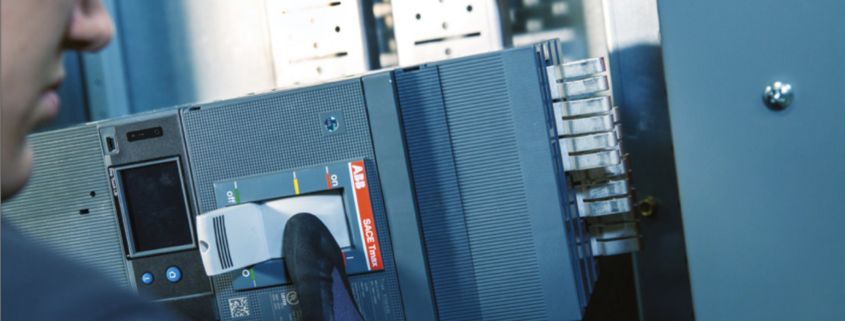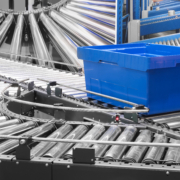Learn the 4 key benefits of plug-in breakers
Plug-in technology is gaining wider acceptance among panelboard and switchboard equipment builders. They are capitalizing on the four big benefits of plug-in breakers to differentiate themselves with safer, more reliable products.
You’ll find a variety of connection technology being used in any piece of power-distribution or control equipment: lugs, terminals, plugs, terminal blocks, push-on connectors, and more. For breakers used in panelboards and switchboards, you will typically find either traditional bolt-on connections or the newer plug-in style.
The bolt-on style is the most widely used, but panelboard and switchboard manufacturers are increasingly taking advantage of the multiple benefits that can only be realized with plug-in technology.
The interesting physics of plug-in design
Many long-time panelboard designers and builders are under the impression that bolt-on connections are superior to plug-in. In fact, plug-ins excel in several ways, including one that’s due to some surprising physics.
During fault currents, the magnified electromagnetic forces create parallel current paths that repel one another. This can cause bolt-on connections to loosen or even blow apart. With plug-in connections, these forces create a “reverse loop” where the repulsive forces between the clip and the bus are overcome by the repulsive forces generated in the arms of the plug-in connection clip. What might be described as “blow-off” forces are harnessed and translated into “blow-on” forces. The contact force is actually intensified proportionally with the magnitude of the current, keeping the clip assembly intact and firmly in contact during faults and short circuits.
Bolted connections also may loosen over time. The diminished connection results in higher resistance that creates heat, increasing potential safety hazards and the risk of board failure.
Plug-in connections are — and have for decades been — commonplace in heavy-duty industrial applications. Busways, motor control centers, and switchgear all use some style of flexible connection between removable devices and the fixed bus within the assembly. Today, plug-in technology is increasingly also available in medium- and low- voltage/high-amperage boards.
Some breaker manufacturers have improved on the plug-in technology with the addition of a compression spring inside the connector clip. This ensures a repeatable and reliable connection force and consistency of contact pressure during typical operating conditions.
Plug-in technology provides four primary benefits to panelboard and switchboard manufacturers, with some of those benefits also flowing to the end users.
Speed
Plug-in installation is much faster than bolt-on. Making bolt-on connections also requires a certain level of skill, as well as attention to the threaded fasteners and any locking hardware, the surface condition of the joined materials, and misalignment between parts.
Safety
Some plug-in breakers feature increased safety thanks to heightened ingress protection. They are available from one breaker provider with a molded-in mechanical barrier that protects the main bus stack from accidental contact with objects larger than 12.5 mm. This complies with IP20-level protection, generally recognized as “finger safe.” This proprietary design also minimizes risk of a forgotten tool or a disconnected wire coming in contact with the bus system.
Flexibility
Plug-in components are far easier to rearrange and reconfigure to accommodate changing end- user requirements or loads. Upgrades and modifications are simple and painless.
Performance
The improved reliability of plug-in technology ensures that breakers incorporating this feature will provide higher levels of performance than bolt-on connections. Breakers are available that provide a repeatable and reliable force to make the connection, ensuring a secure and robust connection. This reduces maintenance requirements, equipment failures, and power- related downtime.
Equipment-manufacturer advantage
Some power-distribution-component makers have capitalized on the benefits of plug-in technology to offer panel manufacturers next-level simplicity when producing UL67 power-distribution panelboards and UL891 switchboards. Their UL489 breakers can be used in either UL67 or UL891 applications without modification.
Panel manufacturers can rely on these component makers for most of the components they require, all of them UL listed or recognized. This frees you from worrying about many of the technical issues, allowing you to focus instead on your areas of expertise; logic/programming, sheet metal and fabrication, testing, etc. Every equipment manufacturer has access to the same components, leveling the playing field between panel providers. What differentiates you is your expertise in the design and higher-level aspects of panelboard and switchboard creation.
Summary
Plug-in breaker technology has been used for many years with great success. If anyone doubts the reliability and widespread acceptance of this concept, they just need to look at the devices upstream of typical panels. You’re likely to find a 4,000 amp drawout air circuit breaker with jaw connections to bus bars with the same magnetic forces as plug-in breakers. The benefits of the plug-in concept are now readily available in panelboard and switchboards for low-voltage applications.
Plug-in power-distribution components do carry a higher price tag, but they may be offset by your savings on design and installation. Plug-in breakers enable panelboard and switchboard equipment manufacturers that differentiate on design and expertise to further set themselves apart from the competition.
Related blog post: “How much time and money can push-in contactors save you?”
—
Thomas Chrysler
Product Marketing Manager – NEMA Smart Power products












